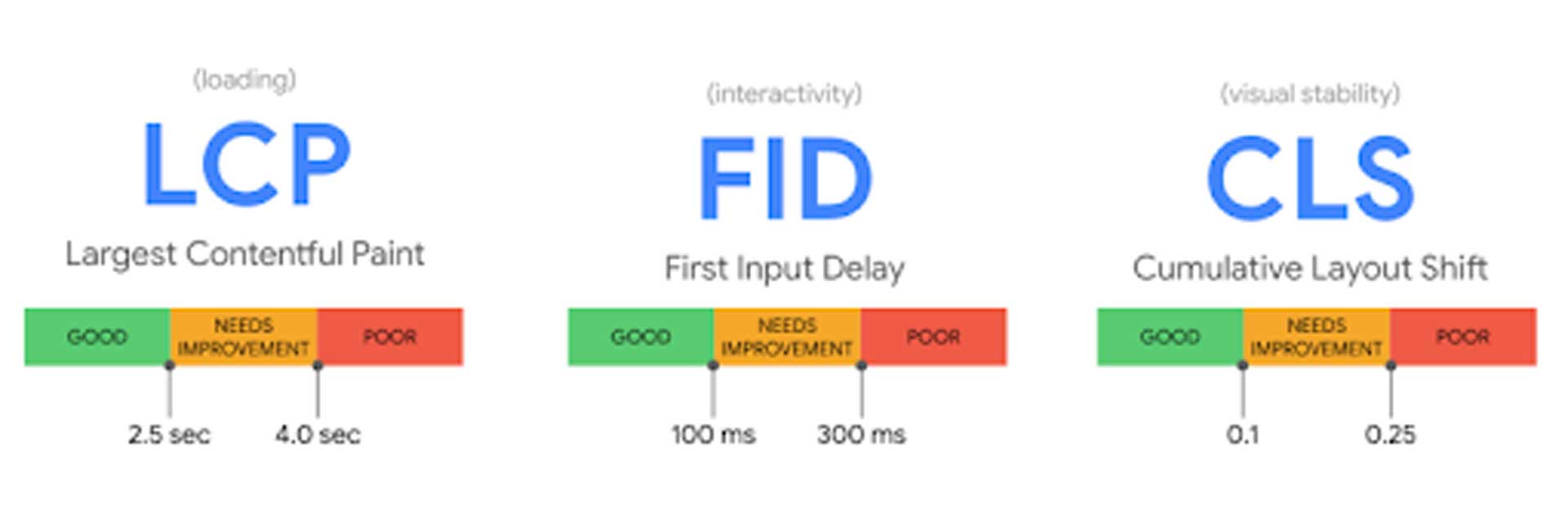Beginning around mid-June 2021, Google will shift the factors they use to determine page rank. Google will utilize a combination of Core Web Vitals and User Experience (UX) related signals. So, mobile friendliness, load speed, and HTTPS security will all be factors in your Google rankings after the update.
As you may or may not know, Google continuously updates its algorithm. There are roughly 1,000 updates per year. That’s close to three a day and is a lot to keep up with for agencies, let alone small businesses.
Most updates are minor and have little to no ripple effect. But a few times a year, broader updates significantly impact the search engine results page. This update will bring page experience into the ranking signals. It will combine Core Web Vitals and previous UX-related signals.

Core Web Vitals are speed, responsiveness, and visual stability metrics. Get ready to add more three-letter acronyms to your vocabulary. Here’s what Google has established these Core Web Vitals as:
Largest Contentful Paint (LCP) or loading: This means how long it takes a page’s primary or main piece of content to load from the user’s point of view. The measurements here are under 2.5 seconds for a good evaluation, and anything over 4 seconds ranked poorly.
First Input Delay (FID) or interactivity: This metric is the time it takes for a user to actually interact with your page. When someone clicks on something on your website, how fast can the browser process the request and load it. The ideal measurement is under 100 milliseconds (ms); anything over 300 ms is considered poor.
Cumulative Layout Shift (CLS) or visual stability: This considers stability, or how a page acts as it loads. Have you ever gone to click something on your phone, and the website shifted or moved unexpectedly? The main reason for this issue is that images are not optimized and create disjointed downloads. The ideal measurement is under 100 milliseconds (ms), and anything over 300 ms ranked poorly.
Or this is how Google states it:
Core Web Vitals are a set of real-world, user-centered metrics that quantify key aspects of the user experience. They measure dimensions of web usability such as load time, interactivity, and the stability of content as it loads (so you don’t accidentally tap that button when it shifts under your finger – how annoying!).
By announcing a change to the algorithm far in advance, people can have a three-month head start. It is better to fix things before they become issues. As a result, there will be a shift in the search results for all industries. Now is the time to take advantage of this opportunity, or you’ll potentially face the uncertainty of putting your website at a significant disadvantage.
There are some great free tools and resources available to help evaluate websites. Google has a great page speed insights tool that will scan and evaluate individual pages, or you can use another free tool from Experte that will check your entire website up to 500 pages. Knowing where your website stands helps you evaluate your situation and develop an action plan.
Power Marketing can analyze your website and provide a report on where your current websites stand. If your website isn’t fully prepared, our team is happy to help provide a strategy to help you successfully navigate this update.
Reach out for a free site audit and evaluation today.
